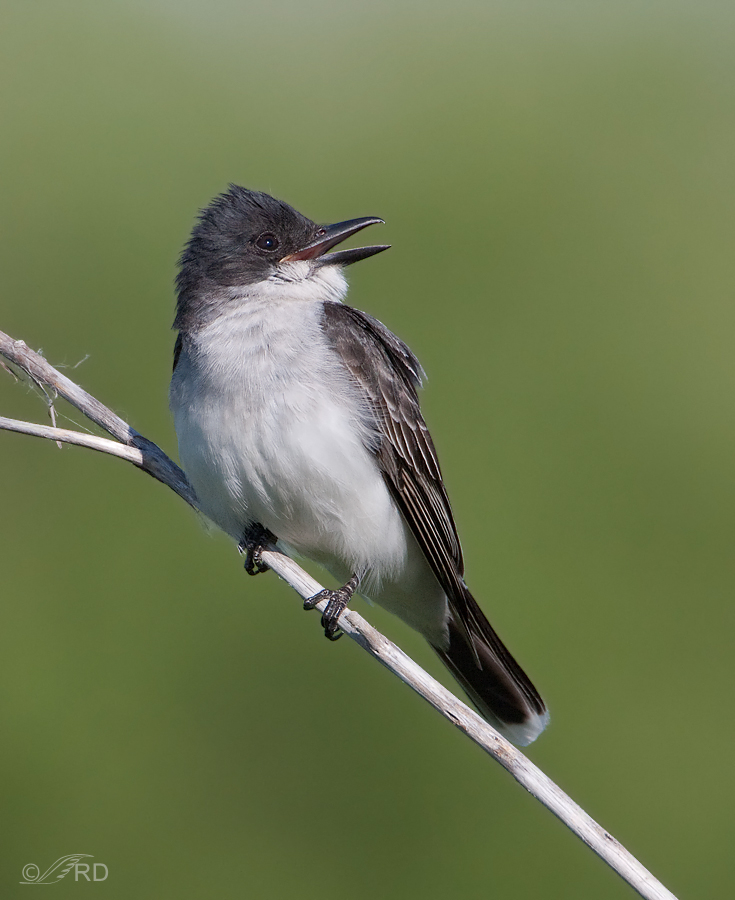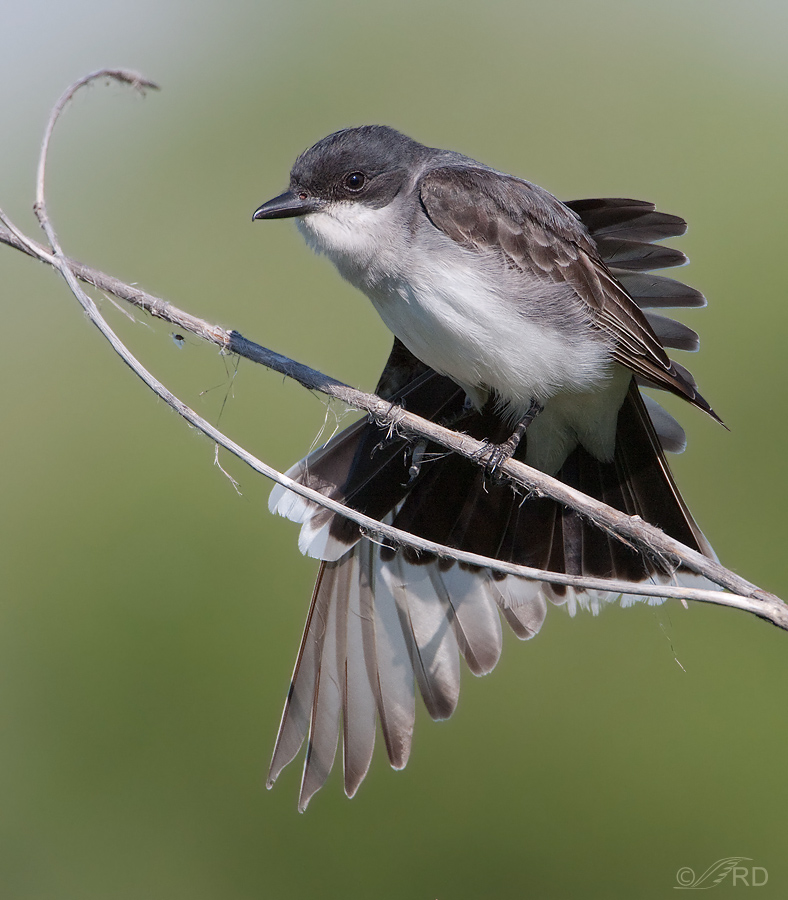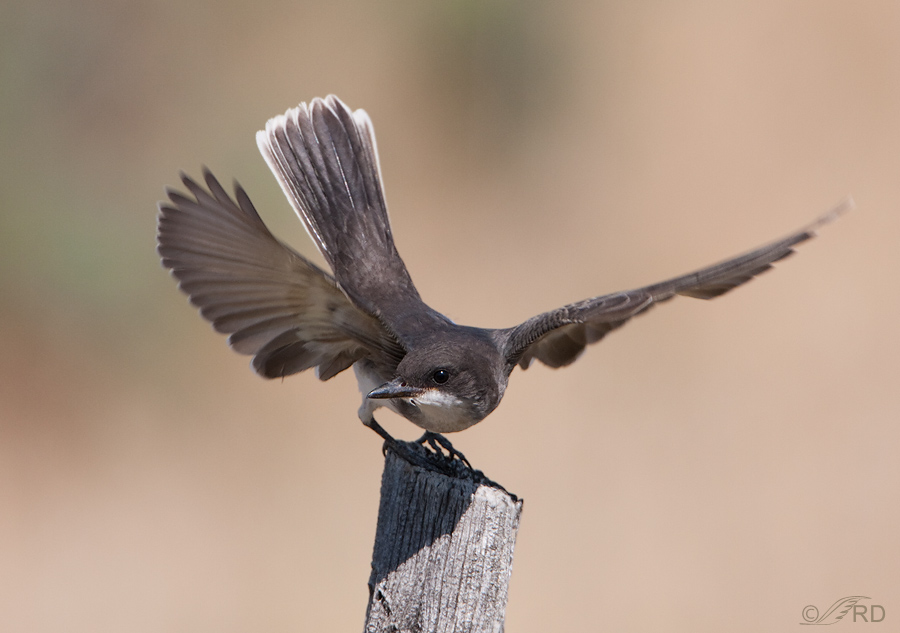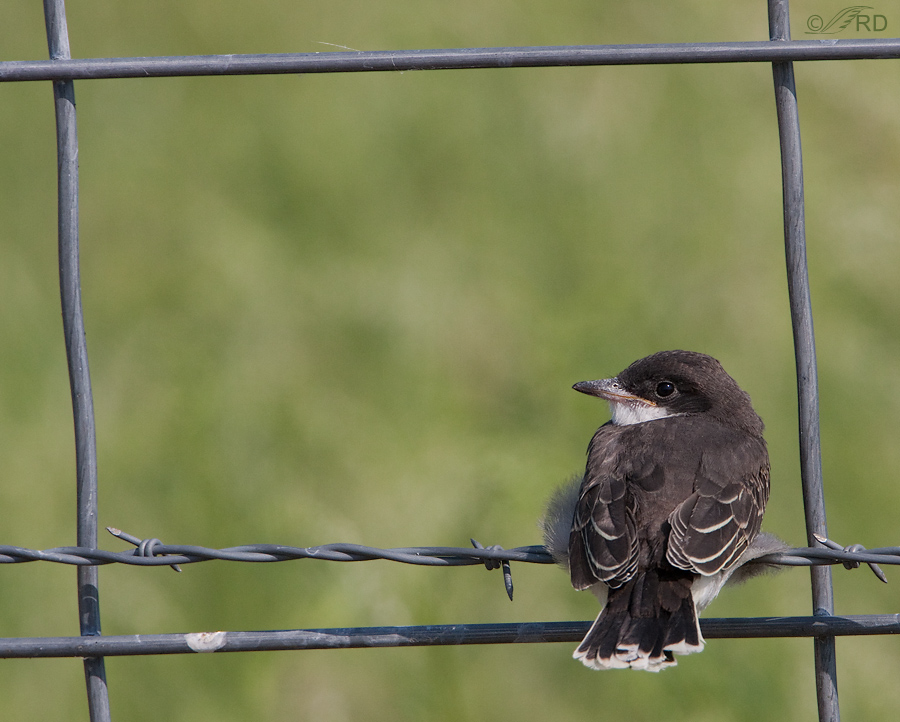It’s snowing hard as I write this and it’s been overcast and gloomy for days which has turned my thoughts to spring birds. Eastern Kingbirds are a prime example as they winter in the Amazon so seeing them around here is a sure sign of springtime.
They’re a fascinating species. Kingbirds are notorious for their aggressive nature toward other birds and their scientific name Tyrannus tyrannus very appropriately means “tyrant, despot or king”. During the breeding season they’re a “sit and wait predator”, largely of flying insects though they eat mostly fruit while on their winter range. They have never been observed to drink water – apparently getting enough of it in their insect and fruit diet. They virtually never walk anywhere! Most locomotion is by flight and when on the ground they either hop to a new location or take short flights but they don’t walk. The only time walking has ever been observed is during nest site selection.
 1/1000, f/9, ISO 500, 500 f/4, 1.4 tc
1/1000, f/9, ISO 500, 500 f/4, 1.4 tc
The kingbird in the first four photos of this post was the most cooperative specimen of the species I’ve ever photographed. It let me get close while on a natural perch (as opposed to the fence wires they so often prefer) and it gave me a variety of interesting calling, preening and stretching poses for almost five minutes.
1/2000, f/9, ISO 500, 500 f/4, 1.4 tc
As the bird moved to my left on the perch it (the perch) developed a different character due to the curving twig coming off the main branch. Here the kingbird is beginning an elaborate and drawn out stretch. Some of the whites are a little bright under the wing but I wanted to show this pose as part of the behavior.
1/1250, f/8, ISO 500, 500 f/4, 1.4 tc
It fanned its tail and then stretched each wing with what seemed to me like obvious enjoyment.
1/1600, f/8, ISO 500, 500 f/4, 1.4 tc
Then it began to call. And I do mean with enthusiasm!
1/1600, f/5.6, ISO 640, 500 f/4, 1.4 tc
These next three photos were taken on my family farm in northwest Montana. I believe this bird and the one below to be juveniles. They were hunting insects from the barbed wire fences. And in reality I really like barbed wire for a perch when it’s rusty and appropriate for the species as it is for these kingbirds.
1/1600, f/5.6, ISO 800, 500 f/4, 1.4 tc
Another thing I liked about the Montana shots is the nice backgrounds I often got from the drying grasses in morning or evening light. I went for an extra shallow depth of field with this shot.
1/1600, f/7.1, ISO 500, 500 f/4, 1.4 tc
This adult bird had just caught a spider(?) and returned to the wire with it. That’s a useful bit of behavior for bird photographers to know – kingbirds will often hunt from a low perch, fly off to retrieve the insect they’ve spotted and then return to the same perch with the prey. Researchers estimate that this happens roughly 50% of the time. So if you wait for the return you can often photograph them with prey or even in flight just as they’re landing if you pre-focus on the perch. Knowing the behavior tendencies of your subjects can often be a very useful tool for nature photographers.
I don’t know for sure what the red debris is on the beak – perhaps a bit of a previous and colorful insectivorous meal…
1/1250, f/8, ISO 320, 500 f/4, 1.4 tc
But if you’re going to try for that landing (or take-off shot) be prepared with the appropriate settings to get the results you’re after. Here I wasn’t anticipating a take-off and didn’t have enough shutter speed to freeze the action in the wings. Something like ISO 400 to 500 and f/6.3 or 7.1 would have given me the shutter speed to stop the motion in the wings. That said, many folks prefer this motion blur in the wings for situations like this.
1/1250, f/10, ISO 500, 500 f/4, 1.4 tc
One final shot that I like even though it’s a little bit different. The wire isn’t rusty but I enjoy the way it frames this fledgling and I like how the youngster is plopped down on the perch. The challenge here was deciding how to rotate and crop the image since the fence was skewed way out of “square”. I finally made the decision to rotate to make the perch wire level and let the rest of the wires fall where they may…
Kingbirds are great fun. I didn’t see many of the eastern species last summer and hope for better luck this coming season.
Ron










Great post! The pics, the narrative, the tidbits of knowledge… Love everything about that last shot, even your watermark placement in the upper corner instead of the usual lower.
What an amazing little bird. It surprises me how often the smaller birds are quite aggressive. Thank you for these shots, they have left me smiling broadly.
These are truly beautiful photos. I love the flycatchers, they are acrobatic, beautiful and obnoxious enough to easily spy as they go about the business of insect elimination!